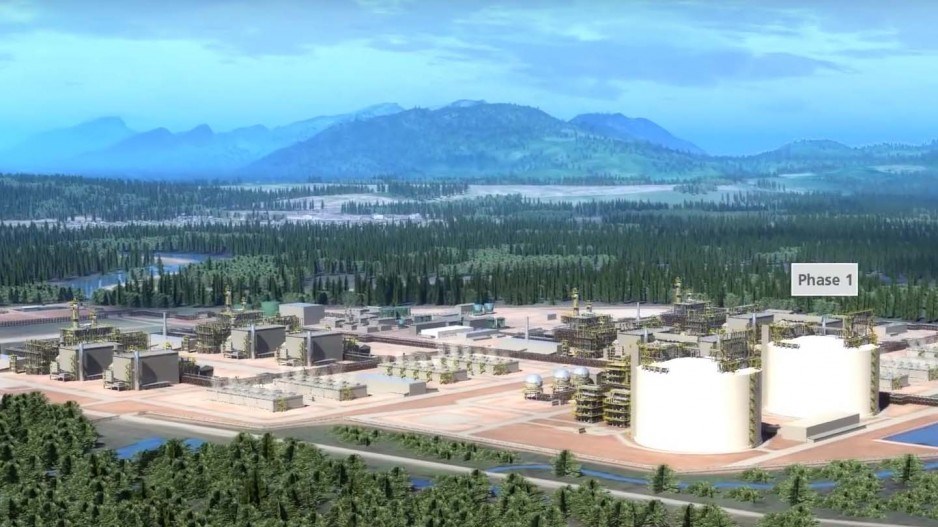Now that a nascent liquefied natural gas (LNG) industry has been placed on an even footing with other industries in B.C. – and with other countries – one major hurdle remains before final investment decisions are likely to be made on the $40 billion LNG Canada project in Kitimat and $1.4 billion Woodfibre LNG project in Squamish.
Those projects still need the federal government to exempt large LNG modules from a 45% anti-dumping duty placed last year on fabricated steel products from China and South Korea.
If the exemptions are granted, LNG projects in B.C. not only might be on a more even footing with competitors in other countries, but also might even have a slight advantage over U.S. LNG projects, which now face escalating capital costs, thanks to American steel tariffs.
“If protectionism grows in the U.S., it’s to the advantage of Canadian LNG,” said Jihad Traya, a natural gas analyst for Solomon Associates.
On March 22, the BC NDP government announced it was scrapping a suite of special taxes that the previous Liberal government had placed on the LNG industry. One would have taxed income from LNG production at 1.5%, then 3.5% after the initial capital investment was paid for and, finally, 5% after 2037.
The Liberals also planned to charge LNG plants a higher rate for electricity. The government will now charge LNG producers the standard industrial rate.
It will also defer PST on capital investments and offer a break on carbon taxes, if LNG projects can stick within certain benchmarks for carbon intensity. If they meet these benchmarks, they will pay a carbon tax of only $30 per tonne, not $50 per tonne, in 2021.
Byng Giraud, vice-president of corporate affairs for Pacific Oil and Gas’ Woodfibre LNG, said none of the measures announced March 22 amount to special tax breaks.
The carbon tax credit, for example, is offered to all energy-intensive, trade-exposed industries, in acknowledgement of the competition certain industries in B.C. – cement manufacturing and greenhouses, for example – face from imports from countries that have no carbon taxes.
“There was a lot of additional costs that were layered on that don’t exist anywhere else in the world,” Giraud said. “There’s no special treatment here. We’re now being treated like any other industry in this province.
“Almost every other industrial activity in this province had an exemption [to PST on capital costs], except for LNG.”
In total, the LNG Canada project is estimated at $40 billion, about $7 billion of which would be spent on the LNG plant itself in Kitimat, and about $5 billion for a new pipeline. LNG Canada will now be able to defer the PST on the capital costs of the LNG plant.
“Capital costs of these projects are huge, so PST is very important,” said Susannah Pierce, director of external relations for LNG Canada. “Addressing the capital cost for construction is fundamentally the most important thing you can do to drive large investment.”
LNG Canada plans to award the engineering, procurement and construction contract for the Kitimat project within about a month, Pierce said. A final investment decision is expected as early as summer, and LNG Canada CEO Andy Calitz recently said he hopes to see construction start in 2018.
Pacific Oil & Gas Ltd. already made a final investment decision on its Squamish plant, but put the project on hold after the last provincial election. It was waiting to see if the new NDP government would confirm its power rates, and now it is waiting to see if the federal government will exempt LNG modules from its steel duties.
KBR Inc. (NYSE:KBR) is conducting an exercise for Woodfibre LNG to get fabrication costs down, Giraud said.
“If we get that federal issue resolved, we should be able to have all the pieces we need for a model. We’ll get a final price from KBR and then we’ll be able to give them notice to proceed.”
Despite tax cuts under the new fiscal framework being adopted by the NDP government, the government expects that the LNG Canada project would generate $22 billion over 40 years, from natural gas royalties and income tax.
BC Green Party Leader Andrew Weaver points out, however, that the credits the government offers to companies conducting deep horizontal drilling forgo a lot of that anticipated revenue.
“There’s more than $3.2 billion in unclaimed tax credits that are available,” Weaver said.
The government notes some of the credits are for wells that will never be drilled and that many jurisdictions, like Alberta, offer similar credits.
Traya said the deep well credits are intended to promote drilling in high-cost, lower-value areas like the Horn River Basin, whereas most of the extraction in B.C. now is in the Montney formation, so a lot of those credits might never be claimed.
“Not likely that there’s $3 billion to extract,” Traya said.
Should the LNG Canada project go ahead, the government estimates it would generate up to 10,000 jobs at peak construction, and 950 permanent jobs on the plant, pipeline and gas fields. LNG Canada has agreed to a 25% apprenticeship hiring policy.
In 2016, several LNG projects in B.C. were put on hold or cancelled outright, following an oil price crash that left energy companies tightening their belts, a drop in demand for LNG in Asia, and an anticipated glut of LNG from new plants in Australia.
Royal Dutch Shell – at 50%, the largest partner in the LNG Canada partnership – now projects the global demand for LNG to continue to grow at 4% to 5% annually to 2030.
See related stories: Will LNG fit in B.C.'s climate change box? and Haisla chief to Andrew Weaver: come to Kitimat




